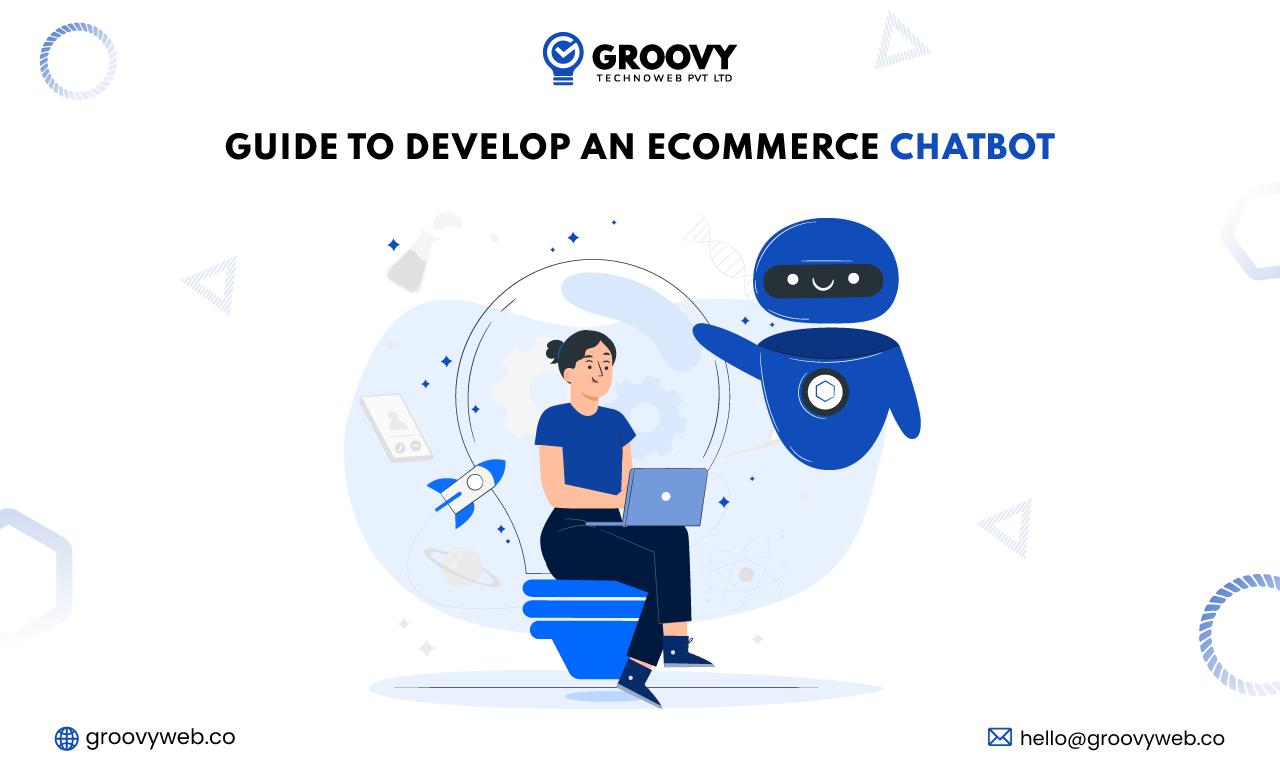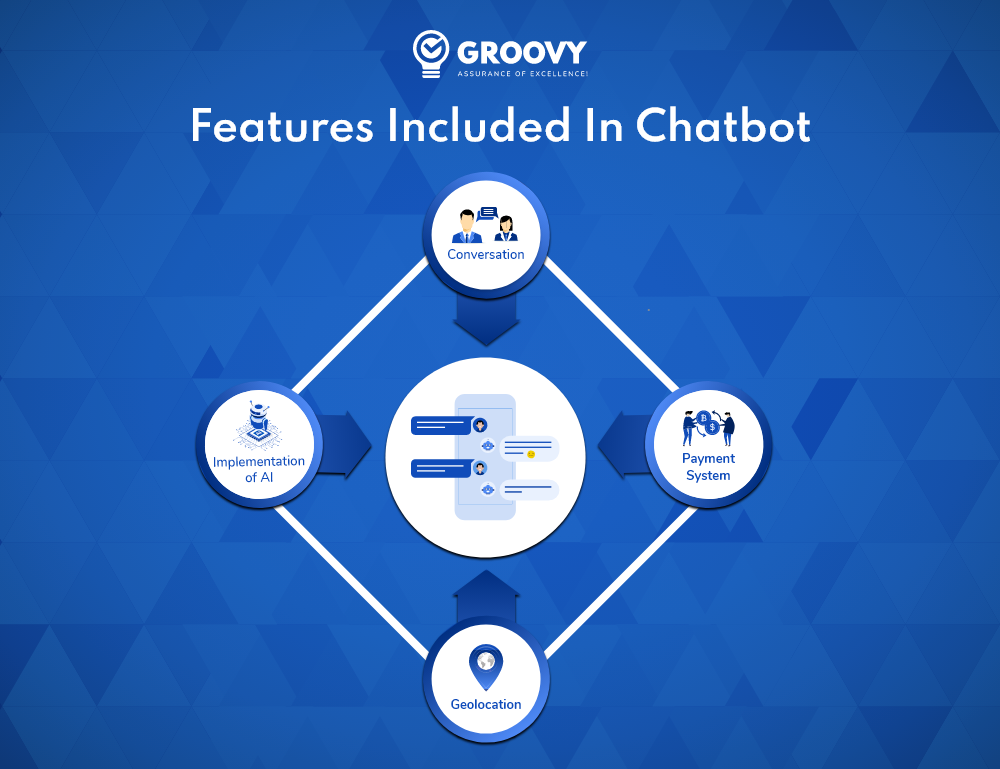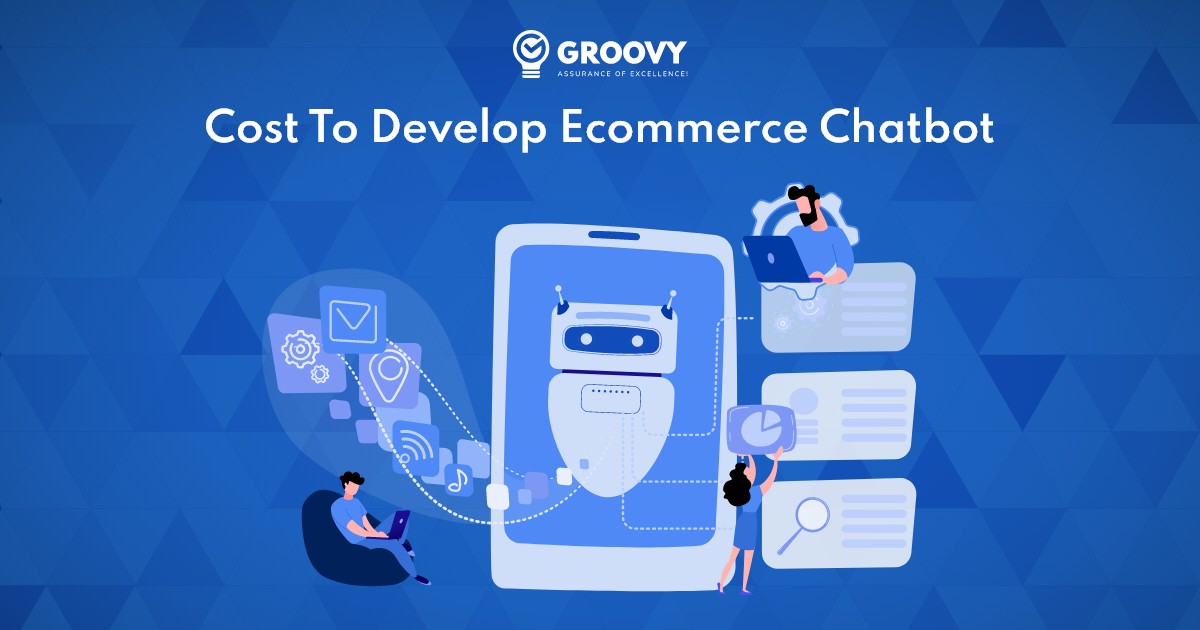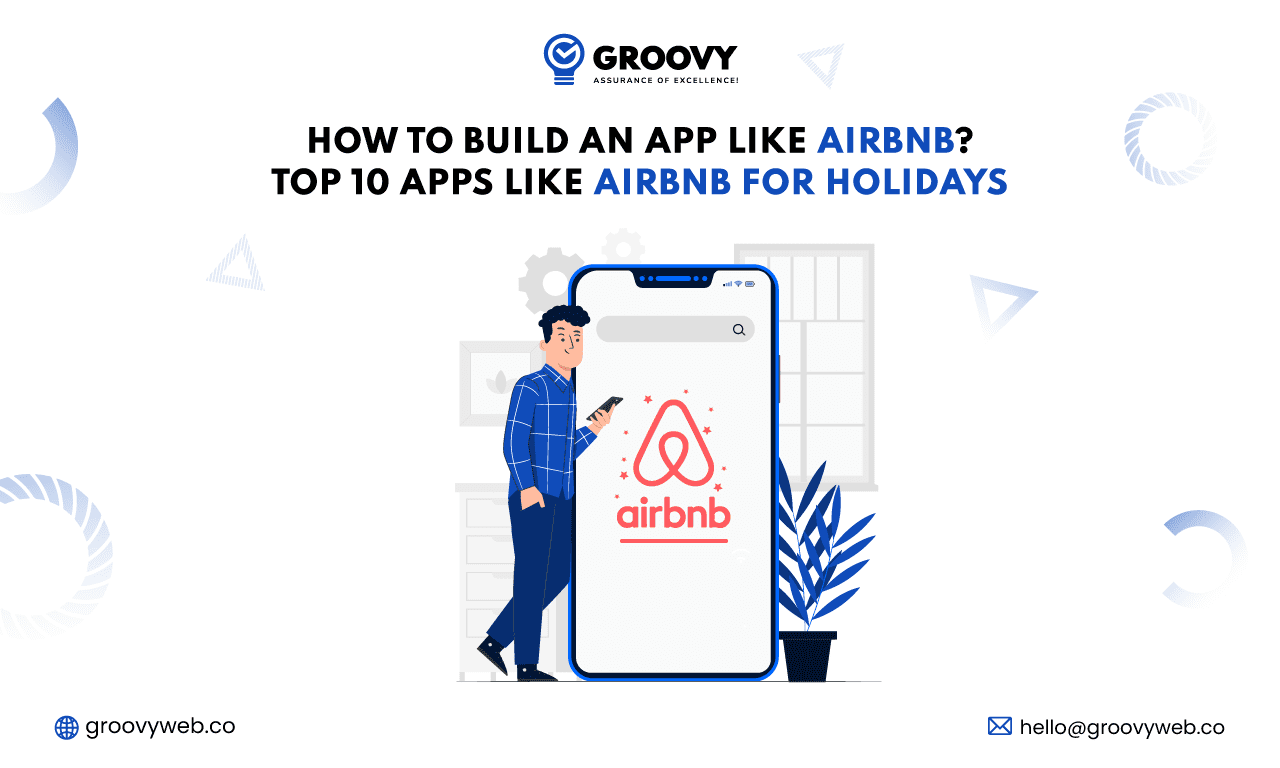Guide To Develop an eCommerce Chatbot
Sagar Patel
January 25, 2023 1525 Views
Quick Summary : This article outlines the different types of eCommerce chatbots, and the development stages of creating an eCommerce chatbot are mentioned in this article.
With so many other sellers, eCommerce Chatbot is a competitive space. To remain ahead, follow other sellers’ activities to understand how they reach their customers. Merchants are currently embracing bots, according to the statistics.
The worldwide chatbot industry is predicted to reach $1.23 billion by 2025, with a compound annual growth rate of 24.3 per cent.
People aren’t just delighted chatting with friends on messenger apps; they’re also excited about buying with brand bots. Here are some statistics that demonstrate buyers’ desire to shop through chat apps:
- Users are open to purchasing products through a bot in 47% of cases.
- Users are eager to receive customer care through a messaging app in 71% of cases.
- Users are willing to pay more than $55 on chatbot purchases.
Messaging apps are not just a passing craze; more and more organizations incorporate chatbots to provide long-term client service. Instead of being behind your competitors’ service levels, Using messaging mobile app technology in your businesses allows you to help your customers swiftly and personally.
What is the Definition of an eCommerce Chatbot?
An eCommerce chatbot is a software program that uses artificial intelligence (AI) and natural language processing (NLP) to simulate human conversation. It is integrated into eCommerce websites or mobile apps to assist customers with tasks such as product recommendations, purchase support, and customer service. The chatbot can understand and respond to customer inquiries and even complete transactions without human assistance. eCommerce chatbots can also be used to automate repetitive tasks such as tracking order status, providing shipping information and even up-selling and cross-selling products.
What’s the Best Method to Develop an eCommerce Chatbot?
You can attempt to create an eCommerce chatbot without the assistance of a third party. You can do this by using subscription-based bot engines like Chatfuel or Rebotify. You will, however, need to employ a chatbot development business if you want a custom-made chatbot.
Chatbots come in various shapes and sizes, and they differ in terms of complexity, features, and development costs.
We’ve listed three different types of chatbots below so you can choose the best one for your company.
Step-by-Step Guide to Develop an eCommerce Chatbot From Scratch
This section of the essay is for you if you’ve decided to change the client experience your online store provides.
The app development stages for eCommerce chatbots are outlined below. Knowing the entire process will ensure that you and the development team are on the same page.
Backend
The chatbot’s backend allows it to handle messages from several channels and process them using natural language processing (natural language processing). To make the conversation happen, the backend of a chatbot communicates with conversational Intelligence and the online commerce system.
Channels
You should identify where your future chatbot will communicate with your consumers in this step. It may be your online store, Skype, Facebook, or even Twitter.
Nonetheless, selecting the appropriate channel is critical. Otherwise, you risk alienating and disappointing your clients, who have come to demand specific features.
Developers design modules to interface a chatbot’s backend with each of the channels you’ve chosen at this point. After the developer has decided on the channels to use, the following step determines some UI elements.
Natural Language Processing
An eCommerce chatbot can send and receive messages once the development team has finished the backend and built channels. The next stage is to add NLP (Natural Language Processing) services into your chatbot to allow it to extract entities and intentions from customer messages. The majority of NLP services allow for the manual entry of entities and values.
At this stage, the eCommerce team maps entities to specific objects that already exist in your eCommerce systems, such as Products, Catalogs, Contacts, and others. On top of the gathered data, the development team applies some business logic validation criteria.
There are two types of NLP chatbots. 1) Cloud NLP & 2) In-house NLP
Cloud NLP
Cloud NLP provides benefits right out of the box. They were taught using a variety of text corpora. They acquire the most up-to-date information and keep track of customer interactions. They certainly have a distinct advantage, and they are both inexpensive and simple to use. Cloud NLP is simple to use, even for those with little experience.
In-house (NLP)
In-house NLP is suited for business applications where data privacy is critical. The company has agreed not to share consumer information with third parties. It’s crucial to apply custom NLP, mainly if the intranet is primarily used for business purposes. In addition, in-house NLP is used in the banking, healthcare industries, and fintech mobile applications, where data sharing is rigorously controlled.
Choosing a Natural Language Processing (NLP) Engine for Chatbot Development
Finalizing the type of chatbot architecture is crucial in chatbot creation. As part of this, selecting the appropriate NLP Engine is critical because it is highly dependent on company priorities and goals. Developers and organizations are frequently perplexed as to which NLP to utilize.
The characteristics required by the company determine the decision between cloud and in-house storage. You could choose to build your engine if your company needs a highly powerful chatbot with specific dialogue capability and security. While in-house NLP engines can deliver mature natural language understanding components in some circumstances, cloud vendors aren’t as good at dialogue management.
Conversational Intelligence
Conversational Intelligence is a map of your customer journey built on the foundation of NLP entities and intents. Developers design the algorithm for each dialogue in this section and easy navigation. In some circumstances, they create simple decision trees, slot-based conversations, and state processes. A deep learning system governs the exchange when clients require a more complex solution.
Chatbots use conversational intelligence to understand users’ brains and discussions better. Customers are encouraged to learn more about a product by using AI chatbots. A conversational AI chatbot is a cutting-edge technology that answers customers’ questions while achieving business goals and increasing interaction and sales.
By asking inquiries with commercial objectives, an AI chatbot should assist customers in purchasing a product or service. To make sales more efficient, it’s critical to include your business goals in the questions while training a chatbot. By studying primary data and encounters, intelligent conversational AI asks clients personalized inquiries.
Conversational Intelligence can help you solve problems. It is critical to solving customers’ problems to grow a customer-focused firm. eCommerce companies use conversational AI to understand customers’ concerns with their services and products. Suppose a potential buyer has a negative experience with your website. In that case, they will almost surely go elsewhere to buy your stuff.
Both customers and online company owners benefit from conversational Intelligence. People are more likely to buy a product from a website if an AI chatbot quickly addresses difficulties. When AI Chatbots frequently learn without human intervention, odd errors can emerge, so it’s critical that you properly train your Chatbot.
Conversational UI
Conversational UI (User Interface) is a design approach that aims to create a natural and intuitive way for users to interact with digital devices and applications through text or voice-based commands. It simulates human conversation in order to complete tasks or access information. It can be implemented through chatbots, voice assistants, and messaging apps, and it can be integrated into websites, mobile apps, and other digital platforms to improve user engagement and experience. This approach allows the user to interact with the system in a more natural and human-like way and enables the system to understand the user’s intent and respond accordingly. It can be used for various purposes like customer service, product recommendations, and completing transactions.
Create a Conversational User Interface eCommerce Chatbot
The design of a conversational user interface, or CUI, is one of the stages of chatbot development. This interface style simulates human interaction between an online store’s customer and itself. Its main goal is to use messengers to make client interactions with the online store easier. A conversational interface is essential not just for the appearance and feel of your eCommerce chatbot but also for the natural flow of the conversation.
Your future chatbot’s interaction interface should offer alternatives such as “Yes,” “No,” and others to aid the dialogue process. An innovative conversational UI should also manage user expectations and suggest user input data confirmation.
Include words like “sure,” “got it,” and “thank you” in your future chatbot’s vocabulary to make it sound more human.
The user should begin the discussion with your chatbot. Allow users to block the chat at any time. The contact information is frequently included in a simple leaving experience. Provide your customer with the ability to contact available human service representatives if he needs to speak with a human about a challenging request.
Let’s have a look at a few examples. There are two types of conversational interfaces. Voice assistants, such as Alexa or Siri, are the first, and Chatbots are the second option. Their primary purpose is to take commands from users in chats and carry on the conversation in a human-like manner. Customers get a more “human” experience due to many conceivable scenarios.
Features Should be Included in Simple and Advanced eCommerce Chatbot

There are so many alternatives you’ll need to decide on the objective of your future chatbot at this point. Your future chatbot could do things like:
- Product Locator
- Check the status of your order
- Provider of customer service
- Notifications of offers
- Shopping assistant on the go
Alternatively, because this technology has so many business applications, these functions can be combined into a single chatbot.
Chatbot programming platforms only provide the most basic features. If you want a personalized bot, you’ll need to think about a few things. These elements are dependent on your business demands; therefore, be specific when approaching chatbot creation businesses.
We’ve compiled a list of both fundamental and complex functions that should be included in each business app:
Conversation
Every chatbot, regardless of its type, requires a conversation mode. This feature is needed for all chatbots, whether simple FAQ chatbots or powerful AI-powered chatbots.
Payment System
This function is most suited for eCommerce chatbots since it assists businesses in increasing sales and expanding distribution channels. Payment gateways should be connected to address several significant issues, including:
- Transactions are encrypted.
- Server location and performance
- PCI DSS ensures secure credit card processing.
- Cloud vs. on-premise architecture
- Data on payments is gathered and analyzed.
Geolocation
Online mapping is another beneficial feature for a chatbot that attracts new consumers based on your business’s location. The most popular geolocation platform, Google Maps Platform, allows you to implement this functionality with very no work.
Implementation of AI
AI algorithms are used in the development of AI-based chatbots. They enable chatbots to learn without the need for human intervention. The bot searches its database for comparable inquiries to each given query and delivers a response accordingly.
Different Types of eCommerce Chatbots
Script Bots
Script bots are a type of chatbot that is built using pre-written scripts or flowcharts. They are typically used to handle simple and repetitive tasks, such as answering frequently asked questions, providing information, and guiding users through a process.
Script bots are typically rule-based and rely on a set of predefined rules or decision-making logic to determine the appropriate response to a user’s input. They typically use simple natural language understanding and do not require sophisticated AI algorithms. They can be quickly and easily deployed and are often used in customer service, e-commerce, and other similar applications.
Script bots are useful for automating repetitive tasks and for providing fast, accurate responses to common questions, but they may not be able to handle more complex or open-ended queries. They can be integrated into websites, messaging platforms, and mobile apps to provide instant support and help customers find the information they need.
Smart Bots
Smart bots, also known as intelligent or advanced chatbots, are a type of chatbot that use artificial intelligence (AI) and machine learning (ML) technologies to understand and respond to user inputs. Unlike script bots, which rely on pre-written scripts or flowcharts, smart bots can learn from user interactions and adapt their responses over time.
Smart bots can understand natural language inputs, including context and intent, and can respond with more sophisticated and nuanced answers. They can also handle more complex and open-ended queries and can even complete tasks such as booking appointments, making reservations, and processing payments.
Smart bots can be integrated into websites, messaging platforms, and mobile apps to provide instant support and help customers find the information they need. They are also used in various industries like customer service, e-commerce, healthcare, finance, etc. Because smart bots use AI and ML technologies, they require more sophisticated development and maintenance, but they can also provide a more personalized and efficient user experience.
Intelligence Agent
Chatbots of this type is the most advanced. They blend machine learning and artificial intelligence technology to become completely self-sufficient. Amazon’s Alexa, IBM Watson, and Siri are excellent instances of such bots.
We propose using script chatbots for our clients. They’re beneficial in almost every situation, from product recommendations to customer service, and they’re less expensive than AI-powered chatbots. Still, the decision is yours to make based on your business requirements.
Cost to Develop eCommerce Chatbot
The cost of developing an eCommerce chatbot can vary greatly depending on a number of factors, including the complexity of the bot, the platform it will be built on, and the team responsible for development.
One of the biggest factors that will impact the cost of an eCommerce chatbot is the complexity of the bot itself. A simple bot that can answer basic questions and provide product recommendations will likely be less expensive to develop than a more advanced bot that can handle complex customer inquiries and even process transactions.

Another important factor to consider is the platform on which the bot will be built. There are many different platforms available, each with its own set of features and capabilities. Some popular options include Dialogflow, Botkit, and Microsoft Bot Framework.
The team responsible for developing the chatbot is also an important factor to consider. If you are using a team of in-house developers, the cost will likely be lower than if you hire a third-party agency. However, an agency may have more experience and expertise in chatbot development, which could ultimately result in a higher-quality product.
On average, the cost of developing a simple chatbot can range from $5,000 to $10,000, while more advanced chatbots can cost anywhere from $15,000 to $50,000 or more.
It’s important to keep in mind that the cost of developing a chatbot is not a one-time expense. There will also be ongoing costs for maintenance and updates and potential costs for hosting and other services.
In conclusion, the cost to develop an eCommerce chatbot can vary greatly depending on the complexity of the bot, the platform it will be built on, and the team responsible for development. It’s important to carefully consider these factors and budget accordingly when planning to implement a chatbot for your online business.
Written by: Sagar Patel
Sagar Patel is the CTO and Co-founder of Groovy Web. He was involved in the telecommunications & Automation industry during his early career. Still, due to his attitude toward learning anything new and mastering it, he now works as a CTO for Groovy Web. Through their business mindset and logical approach, they have taken their company to the next level; His responsibilities now include all aspects of the business. Among them are finance, process design, and development.
Related Blog

Ashok Sachdev
13 Best UI/UX Mobile App Design Trends That Lead the Market
UI/UX Design 08 May 2023 8 min read
Rahul Motwani
How to Build an App Like Airbnb? Top 10 Apps Like Airbnb for Holidays
Mobile App Development 21 Sep 2023 13 min read![Create WhatsApp Chatbot for Startup [A Quick Guide] Create whatsapp chatbot for startup](https://www.groovyweb.co/blog/wp-content/uploads/2022/11/Create-WhatsApp-Chatbot-for-Startup-A-Quick-Guide-scaled.jpg)
Krunal Panchal
Create WhatsApp Chatbot for Startup [A Quick Guide]
Chatbot Development 06 Feb 2023 18 min readSign up for the free Newsletter
For exclusive strategies not found on the blog